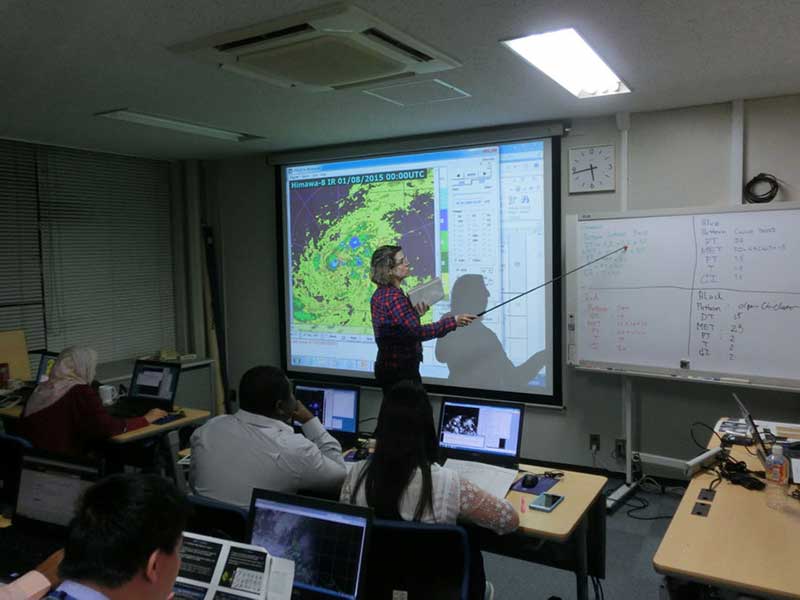- Technologische problemen vragen om technologische oplossingen
- Techreuzen richten zich op schone, betrouwbare en goedkope energie-oplossingen
- Hoe mobiele technologie helpt met het terugdringen van koolstofemissies
- Smog-etende machines die de lucht schoonmaken
- Doorbraken moeten naast technologisch ook moreel zijn
Er komt elk jaar ongeveer 40 miljard ton CO2 in onze atmosfeer en hoewel de bomen, planten en oceanen op aarde hier best een redelijke hoeveelheid van absorberen, blijft de CO2-concentratie elk jaar alarmerend stijgen. Deze hoge niveaus zijn ook geen verrassing als je weet dat er bijna 2 miljard auto’s op aarde rondrijden, duizenden energiecentrales dag en nacht staan te stampen en er miljarden tonnen aardgas, olie en kolen ontgonnen en verbrand worden. Dit alles leidt tot catastrofische veranderingen in ons klimaat, van stijgende zeespiegels en abnormale weerpatronen tot ontdooiende ijskappen. Hoe kunnen we deze ontwikkelingen vertragen, stopzetten of nog beter, terugdraaien? Welke oplossingen kan technologie ons bieden?
Technologische problemen vragen om technologische oplossingen
Het Japans Meteorologisch Instituut, het Europees Milieuagentschap, de National Oceanic and Atmospheric Administration en de wetenschappelijke gemeenschap zijn van mening dat de klimaatverandering vooral een technologische kwestie is: het gevolg van menselijke activiteiten. Het enige positieve hieraan is dat dit ook betekent dat er hoop is op (technologische) oplossingen. De vraag is alleen of we met technologie genoeg kunnen doen om grote klimaatrampen te voorkomen. Het grootste probleem is ons gebruik van fossiele brandstoffen. Dit kan worden opgelost door over te schakelen naar schone en duurzame energiebronnen, zoals wind- en zonne-energie.
Maar zelfs dan hebben we nog een lange weg te gaan want het tij keren is een langzaam proces. Ongeveer 80% van ons mondiale energieverbruik is van fossiele brandstoffen en de wereldwijde implementatie van wind- en zonne-energie, wat nog steeds dure alternatieve energiebronnen zijn, zal niet van de een op andere dag gebeuren. Naast schone, duurzame energie kan ook mobiele technologie een belangrijke rol spelen in het keren van het tij. Verder verwacht men ook veel van zelfrijdende technologie en is men bezig met de ontwikkeling van smog-etende kunstbomen (ja, je leest het goed).

Techreuzen richten zich op schone, betrouwbare en goedkope energie-oplossingen
Met het oog op het verminderen van het gebruik van fossiele brandstoffen en het vertragen van de klimaatverandering is men in Silicon Valley ook al een aantal jaren bezig met schone, duurzame en goedkope energie-oplossingen. Grote namen als Bill Gates, Elon Musk en Google investeren honderden miljoenen dollars in cleantech zoals zonne-, wind- en kernenergie. De hoop is dat deze uiteindelijk kunnen fungeren als betrouwbare en goedkope energiebronnen ter vervanging van fossiele brandstoffen. Hier zijn een aantal korte voorbeelden van waar de techreuzen mee bezig zijn:
Windenergie:
Onderzoekers aan het MIT zijn bezig met de ontwikkeling van offshore windturbines die de opgewekte energie in enorme betonnen bollen op de oceaanbodem kunnen opslaan.
De in Californië gevestigde startup Makani die door Google werd overgenomen, ontwikkelde onlangs de wind kite, een vliegend systeem met acht rotors die fungeren als windturbines. Omdat de wind kite op grotere hoogten vliegt, genereert het systeem meer stroom.
Zonne-energie:
National Laboratories heeft recent in samenwerking met het MIT atoomdunne, ultralichte en transparante zonnecellen ontwikkeld die in een groot aantal producten kunnen worden geïntegreerd. Denk aan de buitenkant van een tablet en zelfs in flexibele producten als gordijnen of kleding. Omdat de zonnecellen volledig transparant zijn, kunnen ze ook op ramen worden gemonteerd.
Kernenergie:
Deze vorm van energie wordt vanwege veiligheidsoverwegingen niet door iedereen omarmd. Wetenschappers zijn er echter enthousiast over omdat het een belangrijke koolstofarme energiebron is. De in Washington gevestigde startup TerraPower, mede gefinancierd door Bill Gates, ontwikkelt momenteel een 500-megawatt reactor die op kernafval draait. De TWR (Travelling Wave Reactor) kan met 700.000 ton kernafval (verarmd uranium) alleen al uit de VS twintig jaar lang in de totale wereldwijde energiebehoefte voorzien. Met de voorraden uit de rest van de wereld is dat ongeveer veertig jaar.
Energieopslag:
De echte game changer voor wind- en zonne-energie is opslagtechnologie. Grote bedrijven, universiteiten en startups zijn daarom bezig met het ontwikkelen van betere accu’s. General Electric ontwikkelde slimme turbines die met behulp van een oplaadbare accu altijd op korte termijn stroom kunnen leveren.
Hoe mobiele technologie helpt met het terugdringen van koolstofemissies
Mobiele technologie verbindt mensen als nooit tevoren. Wel kosten de productie, het opladen en het gebruik van mobiele telefoons veel grondstoffen en energie. Volgens een rapport van de Carbon Trust helpt mobiele technologie echter ook met het verminderen van de CO2-uitstoot in Europa en de VS. De grootste besparingen worden gemaakt in de transportindustrie en het functioneren van (kantoor)gebouwen. Dit komt door efficiëntere routeplanning en automatisering, wat tot lager brandstof- en energieverbruik leidt.
Zelfs elke individuele mobiele gebruiker kan een positieve bijdrage leveren. Uit een internationaal onderzoek onder 4.000 smartphonegebruikers in de VS, Mexico, Zuid-Korea, Spanje en het Verenigd Koninkrijk bleek dat mobiele technologie een grote invloed heeft op het verminderen van de CO2-uitstoot. De meeste gebruikers verklaarden hun mobiele telefoons veel te gebruiken voor routeplanning, wat leidt tot minder autorijden en dus ook minder koolstofemissies. Ook gaven zij de voorkeur aan het digitaal downloaden van muziek en boeken, wat leidt tot een afname in het transport en distributie van de fysieke varianten van deze producten.
Het merendeel van de ondervraagden in deze studie zeiden ook bereid te zijn om hun ‘mobiele gedrag’ te veranderen, als zij daarmee de CO2-uitstoot konden terugdringen. Enkele voorbeelden waren het gebruik van apps voor het bedienen van apparaten, de verwarming thuis en een ‘tele’-afspraak met de dokter in plaats van fysiek naar het spreekuur. Het onderzoek toont aan dat mobiele technologie een positieve impact heeft en de CO2-uitstoot door innovaties als zelfrijdende systemen en smart grids zal blijven terugdringen.
Smog-etende machines die de lucht schoonmaken
Het verminderen van onze CO2-uitstoot is een manier om klimaatverandering tegen te gaan. Maar wat als we CO2 uit de lucht konden verwijderen? Bomen zijn hier zeer goed in. Het probleem is alleen dat het aantal bomen jaarlijks met grote snelheid afneemt. Zelfs als we ze overal zouden planten, dan nog zou het niet genoeg zijn om onze CO2-uitstoot te compenseren. Smog-etende machines zouden weleens een oplossing kunnen zijn.
Koolstofzuigende kunstbomen
Klaus Lackner, directeur van het Lenfest Centrum voor Duurzame Energie aan Columbia University, heeft wel een hele interessante techniek ontwikkeld: een plastic ‘boom’ die CO2 passief uit de lucht filtert. De papierachtige kunststof ‘bladeren’ zijn hier 1000 keer efficiënter in dan echte bladeren. De kunstbladeren hebben geen zonlicht nodig voor de fotosynthese waardoor ze dichter op elkaar gepakt kunnen worden en elkaar zelfs kunnen overlappen. Geconfigureerd in een honingraatvorm zijn ze zelfs nog efficiënter. De kooldioxide wordt uit de lucht gehaald en in de vorm van een soort bicarbonaat op het met natriumcarbonaat geïmpregneerde ‘blad’ opgeslagen. De bladeren worden vervolgens met waternevel schoongespoeld. Lackner’s kunstboomontwerp is in de loop der jaren vele malen van vorm veranderd; van hoogpolig miniatuurtapijt naar een borstel en vervolgens een soort kerstboomtak. De wetenschappers buigen zich ook nog over het vraagstuk hoe ze de koolstofdioxide, nadat het van de bladeren afgespoeld is, verder kunnen zuiveren. Bovendien moeten ze nog veilige manieren ontwikkelen om het gas ondergronds of onder de oceaanbodem op te slaan.
Diamanten uit de lucht
Men droomt er al jaren van om een manier te vinden om CO2 in een waardevolle grondstof te transformeren. Nu heeft een team van chemici aan de George Washington University onder leiding van Stuart Licht, Ph.D., pas geleden een technologie ontwikkeld waarmee atmosferische CO2 omgezet kan worden in koolstofnanovezels. Deze kunnen vervolgens gebruikt worden voor consumenten- en industriële producten zoals wieken voor windturbines, high-end sportartikelen en zelfs vliegtuigen. Licht noemt het proces ‘diamanten uit de lucht’, omdat het niet alleen verwijst naar de hoge waarde van de koolstof nanovezels, maar ook omdat diamanten feitelijk uit koolstof bestaan. Tijdens het proces wordt kooldioxide aan gesmolten carbonaten toegevoegd bij een temperatuur van 750° C. Vervolgens komt er lucht uit de atmosfeer bij en wordt er via nikkel- en staalelektroden een directe elektrische stroom toegevoegd. Hierdoor lost de kooldioxide op en blijven kooldraden op de stalen staaf achter. Er wordt nog volop met het systeem geëxpirimenteerd, maar het team verwacht binnenkort tientallen grammen nanovezels per uur te kunnen produceren.
Doorbraken moeten naast technologisch ook moreel zijn
Door de mens gecreëerde problemen vragen om dito oplossingen en zoals je in dit artikel hebt kunnen lezen zijn er veel positieve ontwikkelingen. Wel is het zo dat het een lange tijd kan duren om het tij van klimaatverandering te keren. Naast mobiele technologie die zorgt voor meer energie-efficiëntie en CO2-etende ‘bomen’ die smog omzetten in koolstofnanovezels worden er nog veel meer technologieën ontwikkeld om de overgang naar een klimaatvriendelijke wereld mogelijk te maken. Technologie stelt ons in staat om onze impact op het milieu te verminderen en onze ecologische voetafdruk te verkleinen. Maar ook is het van kritiek belang dat er een wereldwijde adoptie van deze nieuwe technologieën en technieken plaatsvindt. Andere belangrijke ‘doorbraken’ die we nodig hebben naast technologische, zijn morele. We moeten innovatief denken, de moed hebben om te veranderen en te beseffen dat we de oude mislukte methoden moeten loslaten en vooruit moeten kijken. Dit is niet eenvoudig, maar het is zeker haalbaar.
Share via:


